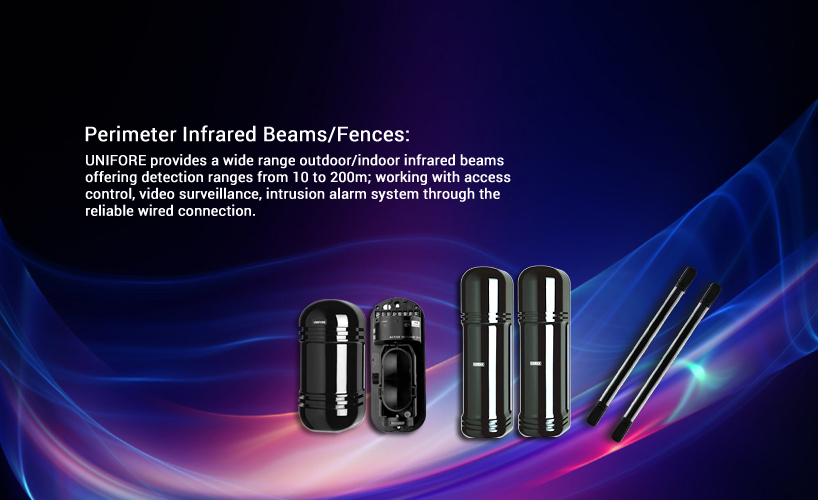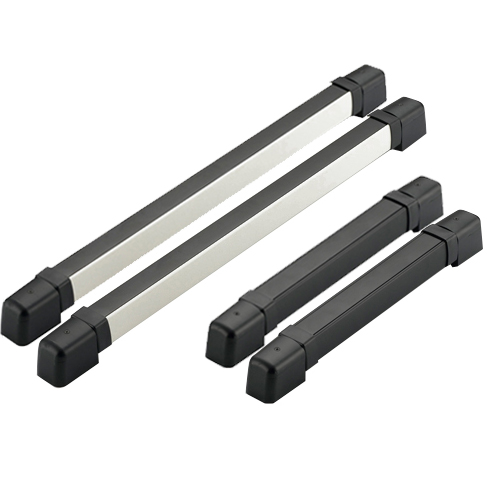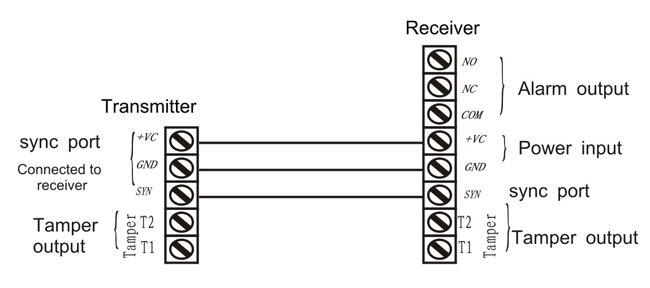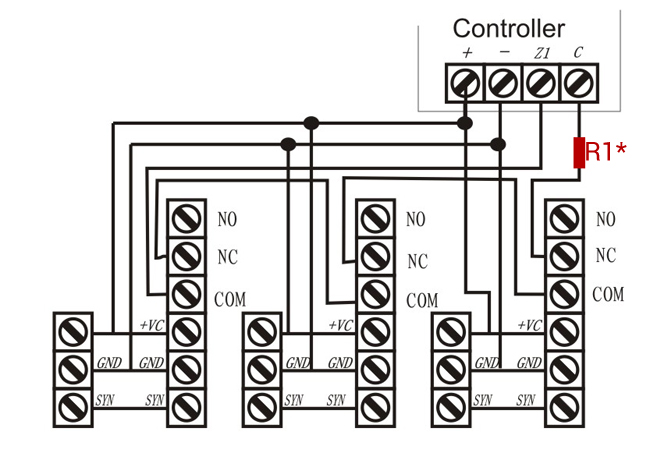
4-channel active infrared fence sensor for perimeter security
Active Infrared (IR) Fence Detectors, or Photoelectric Infrared Fence Sensors have been widely used in perimeter security systems. Unlike the electric fence, the Active Infrared fence detectors utilize invisible Infrared barriers to detect the intrusion. It has long detection/guarding range, low-cost, high-quality, and installation-friendly features. Unifore's IR fence detectors adopt 4-channel frequency design to avoid IR interference between different beams, this can greatly reduce the false alarm rate to offer you accurate motion detection.
Our Active IR Fence Detector product portfolio includes 2∼10 beams, and detection range reaches up to 5m∼40m. These photoelectric fence sensors have N.O. and N.C. alarm output, can work with difference systems through reliable wired connection. It's the ideal security detectors for your intrusion alarm system, access control system, IP surveillance system and home automation system.

1# How active infrared fence detector works?
Each Active Infrared (AIR) sensor comes as a pair, consisting of a transmitter and receiver. IR transmitter emits multiple Infrared light to the receiver, this is the working principle of AIR sensors. The transmitter and receiver are installed opposite each other, the area between the transmitter and received has been guarded by invisible IR-beams. When a person or object crosses the IR-beam, the infrared beam is interrupted. The receiver triggers alarm and send alarm signals.
AIR fence detectors use an active infrared technique, it provides much accurate motion detection than PIR-based detectors. Additionally, the fence sensors use the pulsating code to filter out interference light sources from sunlight,car headlights and lightning flashes. The fence receiver only reacts to interruptions in this pulsating infrared beam, other light sources therefore do not affect the receiver. Our active Infrared fence detectors emit IR in 4 different frequencies to make it difficult to be replicated and interfered.
2# How to choose right AIR fence detectors?
To choose the right active infrared fence detectors, you need to consider the following two things; the number of beams, the detection range. Most active infrared beam detectors have 2, 3, 4, 6, 8, 10 beams. The more the number of beams, the higher of the detector's height. Typically, 2∼4 beams fence detectors are suitable for covering single window and door. 6∼10 beams AIR fence detectors fit the application of balconies and windows and doors in the array.


Detection coverage/range is the another very important factor when choosing the detector. Unlike other detectors, the installation distance between the transmitter and receiver should be the exact/approximate same rated detection distance of Active Infrared fence detectors. This means if the detection range is 20 meters, users need to choose 20 meter Active IR fence detector, not the 40 meters product. However, the Active IR detectors allow users to adjust the intensity of Infrared light to change the detection distance.
3# How to connect the AIR fence detector?
Both IR transmitter and receiver requires power supply (10.5 - 15V DC) to operate. However, sync connection maybe required for the long range detection. When connecting the AIR fence detector to alarm systems, EOL resistor (2.2Kohm) connection is mandatory to supervise the circuit.

Note: In order to avoid false alarm caused by power failure/electricity outage, it's recommended to use UPS power supply.

Note: If the controller is an alarm panel, EOL resistor (R1) should be used, it should be connected in series to protect and supervise the circuit. Other controllers don't need to use EOL resistors.
Get My Latest Posts
Subscribe to get the latest updates.
Your email address will never be shared with any 3rd parties.
Scan me




